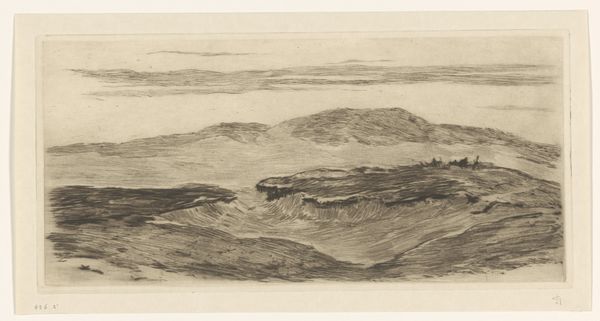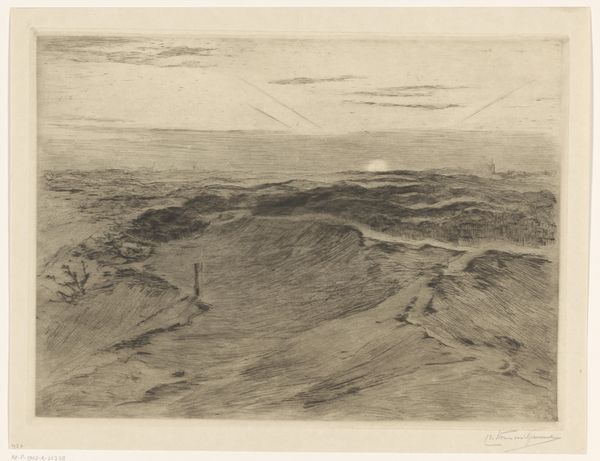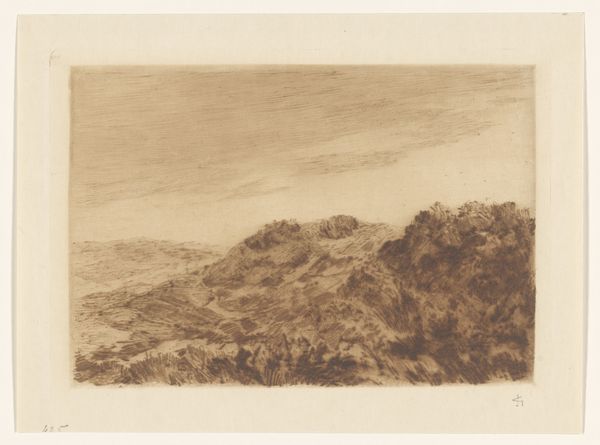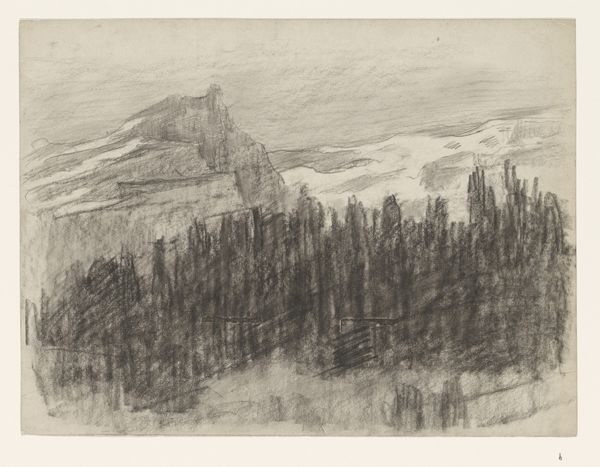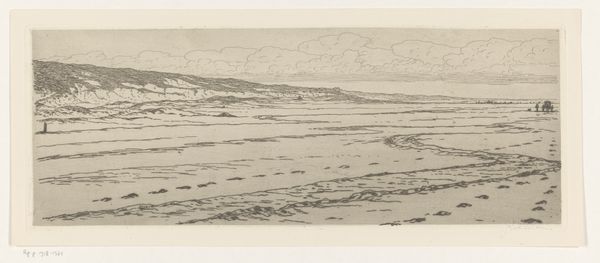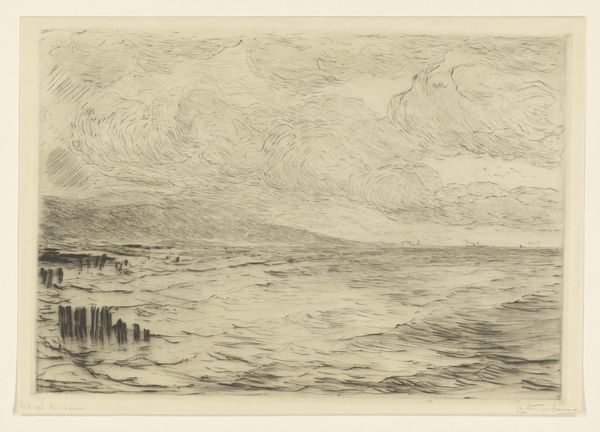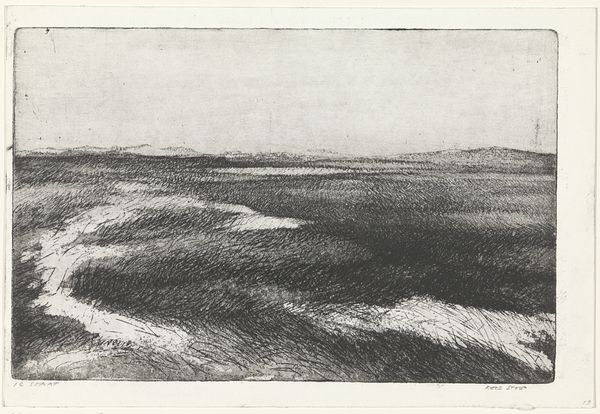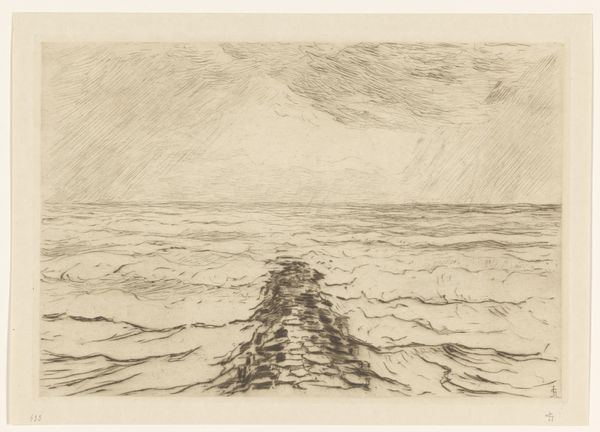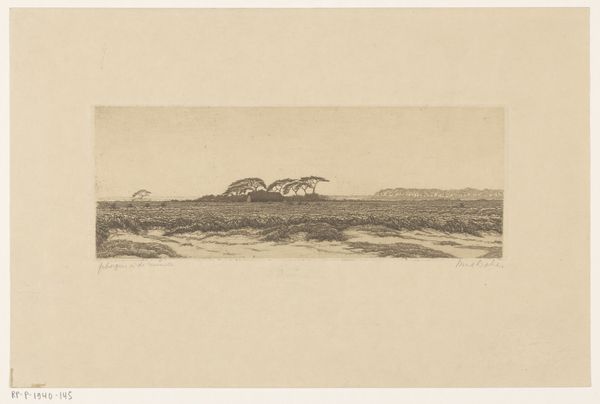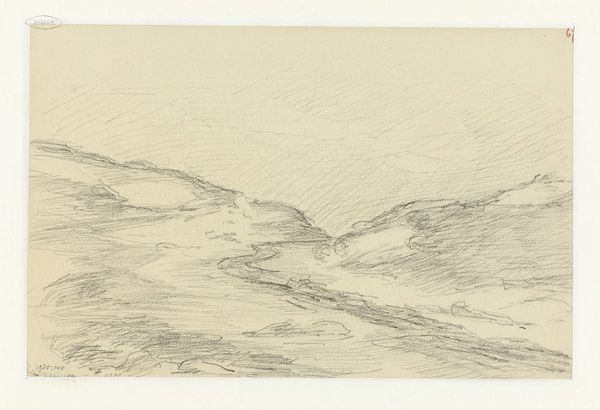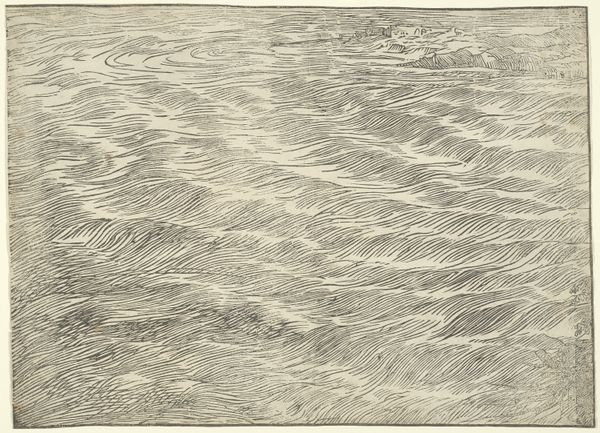
Dimensions: height 162 mm, width 344 mm
Copyright: Rijks Museum: Open Domain
Carel Nicolaas Storm van ‘s-Gravesande created this evocative landscape near Scheveningen as an etching. The linear quality, and the tonal variations achieved with hatching, are all hallmarks of the process. Etching begins with a metal plate, usually copper or zinc, coated with a waxy ground. The artist then draws through this ground with a needle, exposing the metal. When the plate is dipped in acid, the exposed lines are bitten, creating grooves. Ink is then applied to the plate, filling these grooves. The surface is wiped clean, and the image is transferred to paper under high pressure. The resulting print retains a sense of the artist’s hand, as the drawn lines translate directly into the final image. But there's also a degree of industrialization involved: the acid bath, the press. This combination of direct touch and mechanical reproduction made etching a popular medium in the 19th century, allowing artists to create original works that could be widely disseminated. It brings art closer to the realm of craft and industry.
Comments
No comments
Be the first to comment and join the conversation on the ultimate creative platform.
